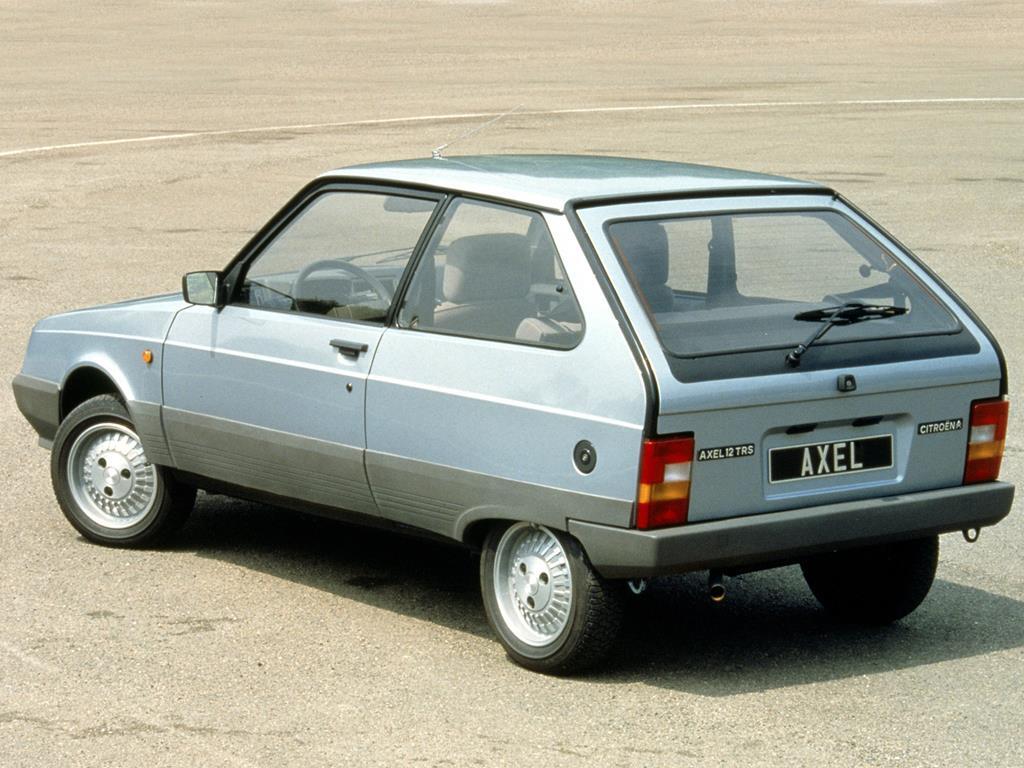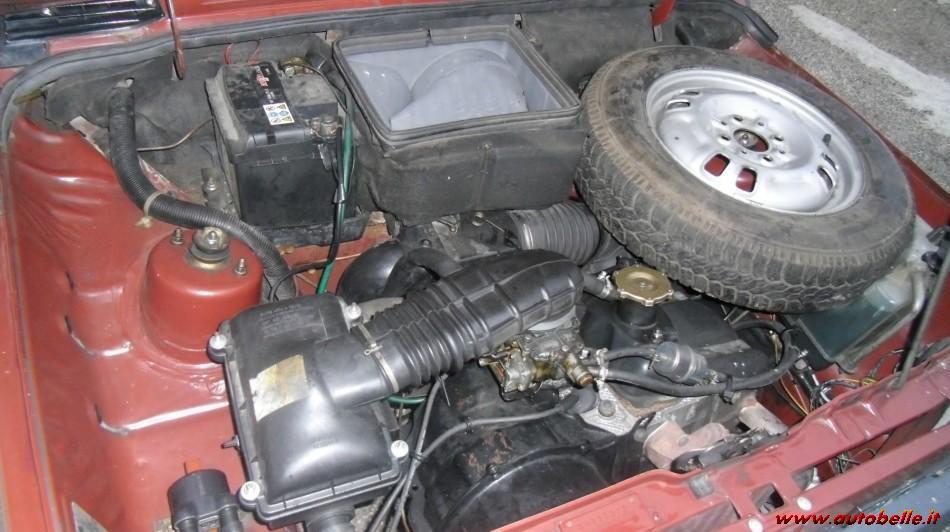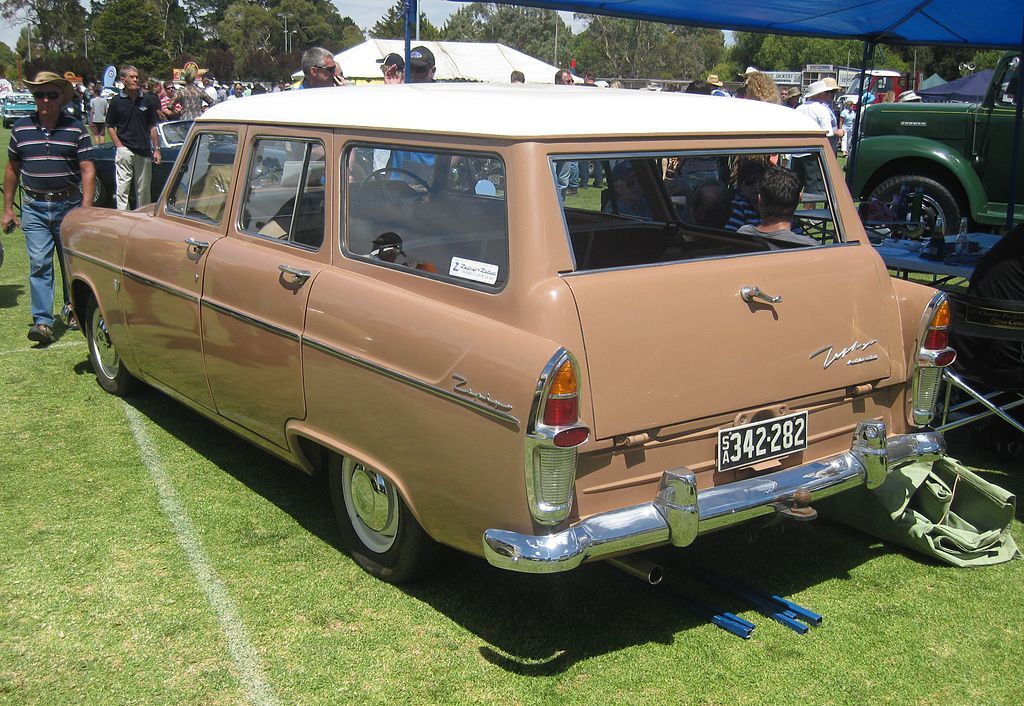|
|
|
Apr 19, 2019 11:45:29 GMT
|
The year that the Polo was introduced as a rebadged Audi 50, 1975, saw this Felber Lancia FF concept presented at the Geneva Motor show:  Felber was a Swiss manufacturer that took other vehicles and put their own spin on them; the Lancia FF concept was based on the Beta. Most of their vehicles were produced in single digit quantities, such as this Brake based on the Ferrari 365 GT4 2+2:  However, the Excellence (based on a Pontiac Firebird) did break into the double digits, as he sold 12 of these, mostly the coupes:   ...along with a few convertibles:  |
| |
|
|
|
|
|
|
|
Apr 19, 2019 21:56:36 GMT
|
Swiss coachbuilder doing low volume vehicles? I give you the Monteverdi Safari. Looks a bit like a Range Rover, had a bigger V8 and even worse fuel consumption...  |
| |
|
|
|
|
|
Apr 19, 2019 21:58:23 GMT
|
Felber ( mrbounce you were just a few second quicker than I) and Monteverdi were not the only Swiss manufacturers that built rare/exotic? cars. Rinspeed built some wild and wonderful things too This Porsche is definitely not the wildest one but I don't mind it.  |
| |
Last Edit: Apr 19, 2019 22:03:03 GMT by rblote
|
|
|
|
|
|
|
Porsche. A manufacturer that tried to replace its ancient 911 design with more modern concepts like the 928 - but in the end, they failed. Similar to the story about the Morgan Plus 4 plus.  |
| |
194? Willys Jeep MB 1965 Volvo 544 Special 1968 Opel Rekord 1975 Opel Kadett Estate 1985 Mercedes-Benz 230E 1985 Datsun 720 King Cab 4x4 diesel 1997 Volvo S70 2.5SE (ex. "Volvo544special65" - changed to more reader friendly username.  ) |
|
|
|
|
Apr 20, 2019 10:48:47 GMT
|
Talking Morgan... This is a Retro Ride  This is an unacceptable modern thing on this very forum  There are not many car manufacturers that keep so close to the original design. Are there others? I know at least one other one. |
| |
|
|
|
|
|
|
|
Morgan used the Rover V8 in their +8 model. An engine that was originally designed by Buick and inherited by Rover. Another manufacturer that bought engine tooling from Buick was Kaiser-Jeep, that bought the Buick V6, used in for example the Jeepster Commando.  (And if you wonder, GM later bought back the V6 tooling from AMC) |
| |
194? Willys Jeep MB 1965 Volvo 544 Special 1968 Opel Rekord 1975 Opel Kadett Estate 1985 Mercedes-Benz 230E 1985 Datsun 720 King Cab 4x4 diesel 1997 Volvo S70 2.5SE (ex. "Volvo544special65" - changed to more reader friendly username.  ) |
|
|
|
|
|
|
"Commando" was a wonderfully over-the-top rubbish 80s Action Movie starring Arnie. There was a Sunbeam Alpine in that film which had the seat ripped out and was then crashed. Arnie is a dick!   |
| |
|
|
vulgalour
Club Retro Rides Member
Posts: 7,291
Club RR Member Number: 146
Member is Online
|
|
Apr 21, 2019 22:07:36 GMT
|
The Alpine has appeared in other car chases too, notably as arguably the first James Bond car, starring in Dr No. Since it was Sean Connery playing Bond at that time, perhaps it was actually a Shunbeam? Anyway, Bond gives us loads of great marques to pick from with all kinds of motoring heritage, so many wonderful British sports cars... Naturally, there's only one Bond car that really matters.  That right, from For Your Eyes Only, the lesser seen square headlight 2CV. I can't find for definite if the headlight change from round to square (and would later go back to round again) was due to international markets, or an attempt to update the styling without making a Dyane, or just an optional trim level that was available. Later 2CV production gets a bit confusing on these details, to me at least. |
| |
|
|
|
|
|
Apr 23, 2019 21:46:16 GMT
|
The Renault 4 was Renault's response to the 1948 Citroën 2CV. Renault was able to review the advantages and disadvantages of the 2CV design. The Renault 4, also known as the 4L (pronounced "Quatrelle"), is a hatchback economy car produced by the French automaker Renault between 1961 and 1994. It was the first front-wheel drive family car produced by Renault. The car was launched at a time when several decades of economic stagnation were giving way to growing prosperity and surging car ownership in France. The first million cars were produced by 1 February 1966, less than four and a half years after launch;[6] eventually over eight million were built, making the Renault 4 a commercial success because of the timing of its introduction and the merits of its design. Although originally marketed as a small estate car, it is now regarded as the first mass production hatchback car.  |
| |
|
|
vulgalour
Club Retro Rides Member
Posts: 7,291
Club RR Member Number: 146
Member is Online
|
|
Apr 23, 2019 23:03:08 GMT
|
The Renault 4 uses the engine that formally lived in the back of the Renault 4CV, and this set up would last through the Renault 6, and into the earliest Renault 5s. I don't know why Renault went from 4 to 6 and then to 5, but they did. There's a few examples of cars making use of the rear engine from an older model in the front, usually because it was cheaper to produce a car if you could make use of existing components. That's exactly what VW did in Brazil with the Gol, a car that looks a bit like a Polo and makes use of an old air-cooled Beetle engine in the front.   It made a lot of sense for the market these were destined for, familiar mechanicals meant servicing shouldn't be an issue, and costs could be kept down. They would later go to a more conventional watercooled engine in the front. There's even a tenuous link with Citroen in the form of the BX name give both to a Citroen model, and the platform that the Gol was built on. The name is really the only thing those two cars share. |
| |
|
|
|
|
|
|
|
Citroen did a similar thing with the Citroen Axel. Using an engine they had already in stock.  The Citroën Axel was a supermini automobile produced between 1984 and 1990 and developed in co-operation by Citroën of France and Oltcit, a joint venture company with the Romanian government.They were powered by the air-cooled engines from the Citroën GS/GSA and an air-cooled flat-twin engine from the Citroën Visa. Engine:652 cc air-cooled; 1129 cc air-cooled; 1299 cc air-cooled. Curb weight:875 kg I think with a weight of only 875KG the 1299 cc air-cooled model might have been a reasonable quick little thing. |
| |
|
|
|
|
|
|
|
Cool info on the VW Gol. I did not know that. ( the 2 cyl Citroen Axel I knew about, but also cool...) So in a way very similar to the 1st gen Fiat Panda, where all Fiat's small engines went to die. The regular Panda 45 with the 903 4 cylinder, which was a version of the 127 and 850 engine, which was derived from the Fiat 600 engine. And ( for the Italian market only )the Panda 30 Which had a 650 aircooled twin, adapted from the 126, which was the updated version of the original Fiat 500. There also was a 4x4 version done by Steyr-Puch ( with the 965cc version of the 903, out of the Autobianchi A112) And Steyr-Puch also made a licence built version of the Fiat 500 ( but with their own aicooled 2 cyl boxer engine ) Its like it all came back together one more time, in the same car...   |
| |
|
|
|
|
|
|
|
Because I like a tenuous connection, The Mk4 Zephyr also had the spare wheel under the bonnet. ![]()  |
| |
|
|
|
|
|
Apr 24, 2019 10:29:51 GMT
|
|
Not just the spare wheel...
There is also this:
"Zephyr Mark IV
Models 3008 / 3010E
In 1961, Ford began a complete redesign on the Zephyr, under the title of "Project Panda". "
|
| |
|
|
|
|
|
Apr 24, 2019 11:35:45 GMT
|
Zephyr Mark IV Models 3008 / 3010E In 1961, Ford began a complete redesign on the Zephyr, under the title of "Project Panda". As the car used the new V-series engines, the then traditional long bonnet concept created a problem until design engineer Harley Copp required that the car was both larger and had more internal space, and came up with the idea of placing the spare wheel ahead of the radiator on an angle. The result was a vehicle of similar dimensions to the North American Ford Fairlane. (https://en.wikipedia.org/wiki/Ford_Zephyr and driventowrite.com/2017/02/28/brochures-ford-zephyr-mk-4-profile/)The Australian Ford Zephyr Mark II Station Wagon. The Australian-developed Mark II Station Wagon differed from its British Estate Car counterpart in having a wind-up rear window.  |
| |
|
|
|
|
|
Apr 24, 2019 11:46:09 GMT
|
The Renault 4 uses the engine that formally lived in the back of the Renault 4CV, and this set up would last through the Renault 6, and into the earliest Renault 5s. I don't know why Renault went from 4 to 6 and then to 5, but they did. There's a few examples of cars making use of the rear engine from an older model in the front, usually because it was cheaper to produce a car if you could make use of existing components. IIRC, the 4 and earlier 5's had a normal north/south engine/box configuration, just reversed, with the box in front to give FWD. This resulted in a long, wand-like affair from the cab, over the engine, to another long shaft sticking up out the box. Smooth gear changes were slow and steady!  |
| |
|
|
vulgalour
Club Retro Rides Member
Posts: 7,291
Club RR Member Number: 146
Member is Online
|
|
Apr 24, 2019 23:01:11 GMT
|
|
same set up on the 6. Makes the engine an absolute faff to work on, though I imagine it's good for weight distribution since it's sort of mid-engined as a result.
|
| |
|
|
|
|
|
Apr 24, 2019 23:56:15 GMT
|
You mention "Renault" and "mid-engined".... Is there a better Renault that really bring this together?  |
| |
|
|
|
|
|
|
|
No, but there was this mid engine Renault powered Lotus Europa...  |
| |
|
|
ToolsnTrack
Posted a lot
   Homebrew Raconteur
Homebrew Raconteur
Posts: 4,145
Club RR Member Number: 134
|
|
Apr 25, 2019 14:11:47 GMT
|
The Europa was a surprisingly aerodynamic thing, with a drag co-efficient of 0.29. This co-efficient was matched by Plymouth and Dodge when they put pointy noses on their Daytona / Superbird...  |
| |
|
|




















 )
)















